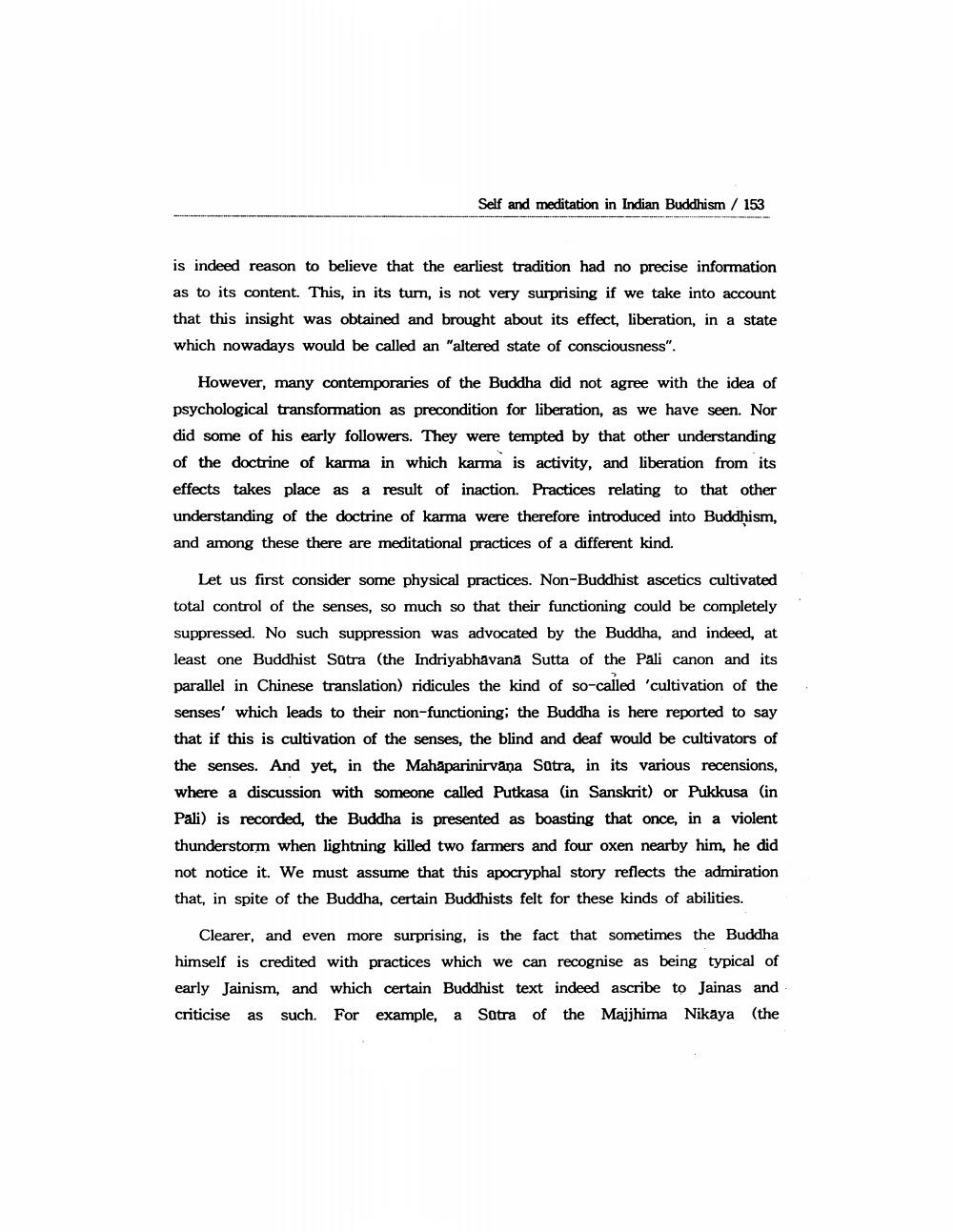________________
Self and meditation in Indian Buddhism / 153
is indeed reason to believe that the earliest tradition had no precise information as to its content. This, in its tum, is not very surprising if we take into account that this insight was obtained and brought about its effect, liberation, in a state which nowadays would be called an "altered state of consciousness".
However, many contemporaries of the Buddha did not agree with the idea of psychological transformation as precondition for liberation, as we have seen. Nor did some of his early followers. They were tempted by that other understanding of the doctrine of karma in which karma is activity, and liberation from its effects takes place as a result of inaction. Practices relating to that other understanding of the doctrine of karma were therefore introduced into Buddhism, and among these there are meditational practices of a different kind.
Let us first consider some physical practices. Non-Buddhist ascetics cultivated total control of the senses, so much so that their functioning could be completely suppressed. No such suppression was advocated by the Buddha, and indeed, at least one Buddhist Satra (the Indriyabhavana Sutta of the Pali canon and its parallel in Chinese translation) ridicules the kind of so-called 'cultivation of the senses' which leads to their non-functioning the Buddha is here reported to say that if this is cultivation of the senses, the blind and deaf would be cultivators of the senses. And yet, in the Mahaparinirvana Satra, in its various recensions, where a discussion with someone called Putkasa (in Sanskrit) or Pukkusa (in Pali) is recorded, the Buddha is presented as boasting that once, in a violent thunderstorm when lightning killed two farmers and four oxen nearby him, he did not notice it. We must assume that this apocryphal story reflects the admiration that, in spite of the Buddha, certain Buddhists felt for these kinds of abilities.
Clearer, and even more surprising, is the fact that sometimes the Buddha himself is credited with practices which we can recognise as being typical of early Jainism, and which certain Buddhist text indeed ascribe to Jainas and criticise as such. For example, a Satra of the Majjhima Nikaya (the




